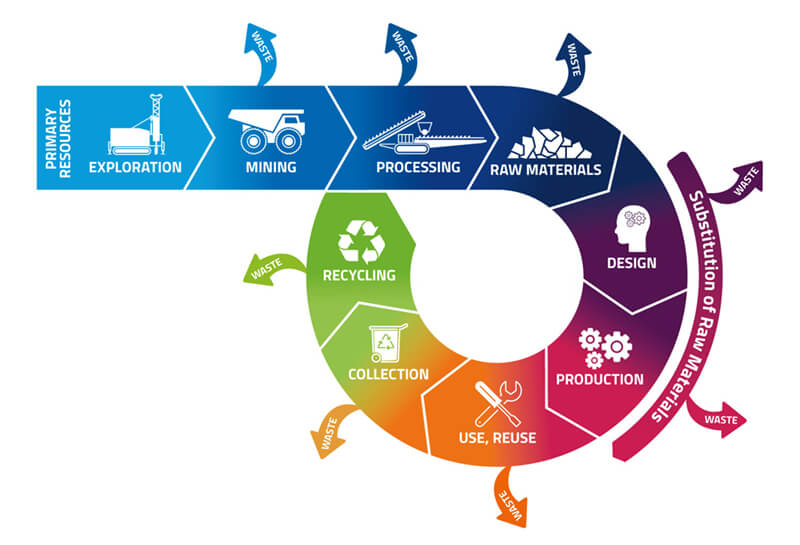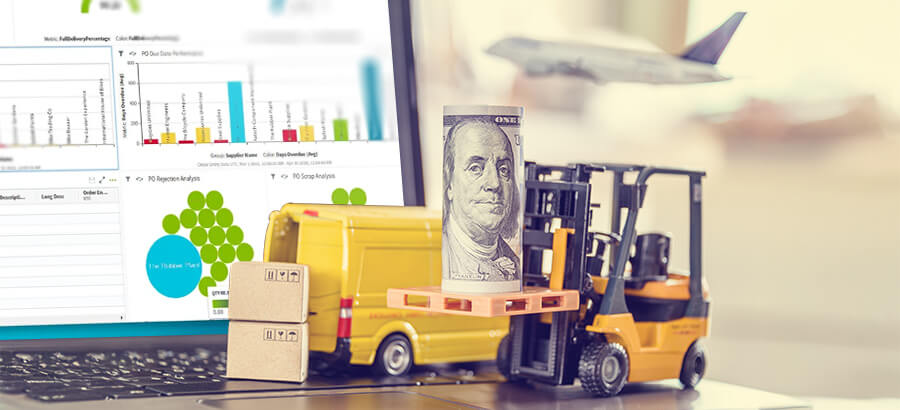This year is the 50th anniversary of Earth Day, an annual event where communities and individuals come together to demonstrate support for the environment, and environmental protection. Since the 1990s, one of the themes has been the issue of recycling, and out of the awareness generated by that has emerged the concept of “the circular economy”. The core message of the circular economy is ‘take, make, reuse’, which is in contrast to the traditional (linear) approach of ‘take, make, dispose’

What is the circular economy
The term ‘circular economy’ (or circularity) has been around since the early 2000s. It refers to a system aimed at the continual use of resources and eliminating waste, so keeping parts, products, equipment and infrastructure in use for longer. Waste from one process, should be an input into another process either as a by-product, as a recovered resource for another process, or as a regenerative resource that can be put back into the environment, like compost.
Organizations like the World Economic Foundation have produced reports to show the economic benefits of moving from a linear to a circular economy, for example:
- Beer packaging, processing, distribution: costs reduced by 20%
- Mobile phones: remanufacturing costs reduced by 50%
- Circularity in EU manufacturing: cost savings of US$630 billion
A number of industries are already involved in circularity, mostly by using waste or scrap as input material for products:
- packaging (plastics, glass, tin cans)
- automotive (remanufacturing of parts)
- construction (reusable abrasives)
So there are proven financial benefits for manufacturers to consider adopting a circular approach.
The 7 Key elements to a Circular Economy
There are 7 key elements that are believed to be a critical part of any move by a typical organization, to a circular economy:
- Design for the future – account for the systems’ perspective during the design process, to use the right materials, to design for appropriate lifetime, and to design for extended future use.
- Incorporate digital technology – track and optimize resource use and strengthen connections between supply chain actors through digital, online platforms and technologies that provide insights.
- Preserve and extend what is already made – while resources are in-use, maintain, repair and upgrade them to maximize their lifetime and give them a second life through take back strategies when applicable.
- Prioritize regenerative processes – ensure renewable, reusable, non-toxic resources are utilized as materials and energy in an efficient way.
- Use waste as a resource – utilize waste streams as a source of secondary resources and recover waste for reuse and recycling.
- Rethink the business model – consider opportunities to create greater value and align incentives through business models that build on the interaction between products and services.
- Collaborate to create joint value – work together throughout the supply chain, internally within organizations and with the public sector to increase transparency and create joint value.
A manufacturer with a modern ERP system immediately has a number of the above elements in their ERP system already, and can easily begin to implement a circular economy initiative.
The organization can immediately incorporate digital technology, preserve and extend what is already made, and collaborate to create joint value, which it should be doing anyway as these are simple good practices for any business. Rethinking the business model is becoming more and more a requirement as businesses progress their digital transformation – a number of the existing business models are becoming redundant.
We recommend that you start it off small in one area as a project, and expand it as knowledge and understanding of the requirements increases.
Using an ERP system to implement a circular system
An ERP system has several tools within the manufacturing and distribution areas of the software that already support circularity, and can help enterprises improve their circularity implementation.
Let’s take a look at the main areas of focus:
Bill of Materials, and Engineering Change Control
- The Bill of Materials, or BOM is a good place to start. By ensuring accuracy of the BOM, waste is reduced and replenishment is aimed at Just-In-Time, which reduces unnecessary loads on the system (Read up on the Japanese concepts of Muda, Mura, and Muri)
- Manufacturers looking to incorporate recycled material in their production process without compromising the final product should be continually checking their Bill of Materials (BOM). The ERP ensures you have full control of the quantity, quality, and cost of the materials, and control the hierarchy of the resources, items and parts that comprise your product. Information from the BOM can help companies trace and report on the percentage of recycled materials that make up the final product sold to customers.
- At the design level, engineering change control allows you to plan and check the items that constitute a product during the development phase, and how best to incorporate pre-used parts, or what recycled material can be used in a recipe.
- If an ingredient or component is found to be defective i.e. the recycled material impacts product quality, a capability like a ‘where-used’ search can be used to identify all of the parts or products that might be affected and quickly mitigate any risk or further waste.
Material Requirements Planning, or Kitting
No business wants to hold stock that is not going to be used soon, and that can be avoided by using Material Requirements Planning (MRP), and the Kitting functionality. Like cooking a meal, you want to ensure you have all the ingredients in the right quantity before you start cooking. MRP, and Kitting, ensures that what is needed for the production process by placing orders for the right items and quantities, to be delivered and available in stock just-in-time before production starts. MRP also provides you with accurate Just-in-time base material replenishment.
Inventory Management
Excess stock is one waste companies can avoid, but if the stock has an expiry date, or is temperature sensitive, you want to make sure the items are used in time or don’t get spoilt. An inventory management system that logs and tracks these criteria, through accurate stock control and integration with IoT and sensors, provides the assurance that items are stored in the required conditions and consumed before expiring.
Co- and by-products
- Managing co-products and by-products results in less waste, better machine utilization, and allows greater opportunity to reuse materials in the production process.
- Businesses can also generate extra revenue by creating demand for by-products that are not used, into products that can be sold to other organizations that can use them.
Supply chain management
- If you have a web platform that enables online transactions with suppliers (a Portal), you can improve the collaboration with them in many different areas, for example, to ensure that if the design or production teams change a BOM to include recycled material, the change of requirements are seamlessly passed on the suppliers, and the new orders delivered to the updated requirements.
- With an automated Request for Quote capability, you can easily invite existing and new suppliers to include reused or recycled items in their tenders.
ERP provides the solutions, processes and tools to assist you to manage your data and gain insights into your business. Using this, manufacturers can contribute to the circular economy by processing inputs and raw material more efficiently, while reducing waste and protecting the environment. The added benefit of improvements in operational efficiency ultimately improves productivity and ultimately bottom-line results.
It is an opportunity for companies to play a greater role in circularity, as good corporate citizens for the sake of future generations.






